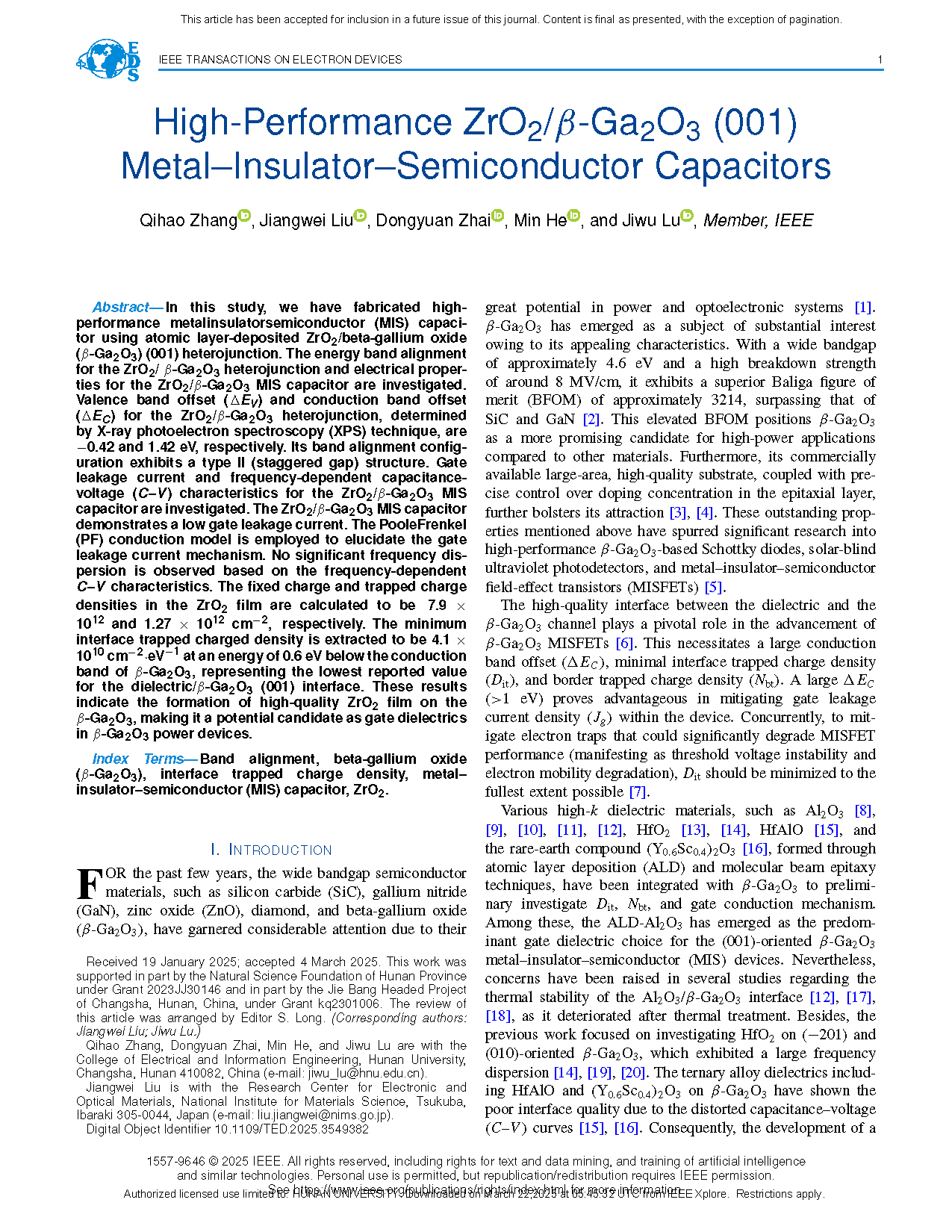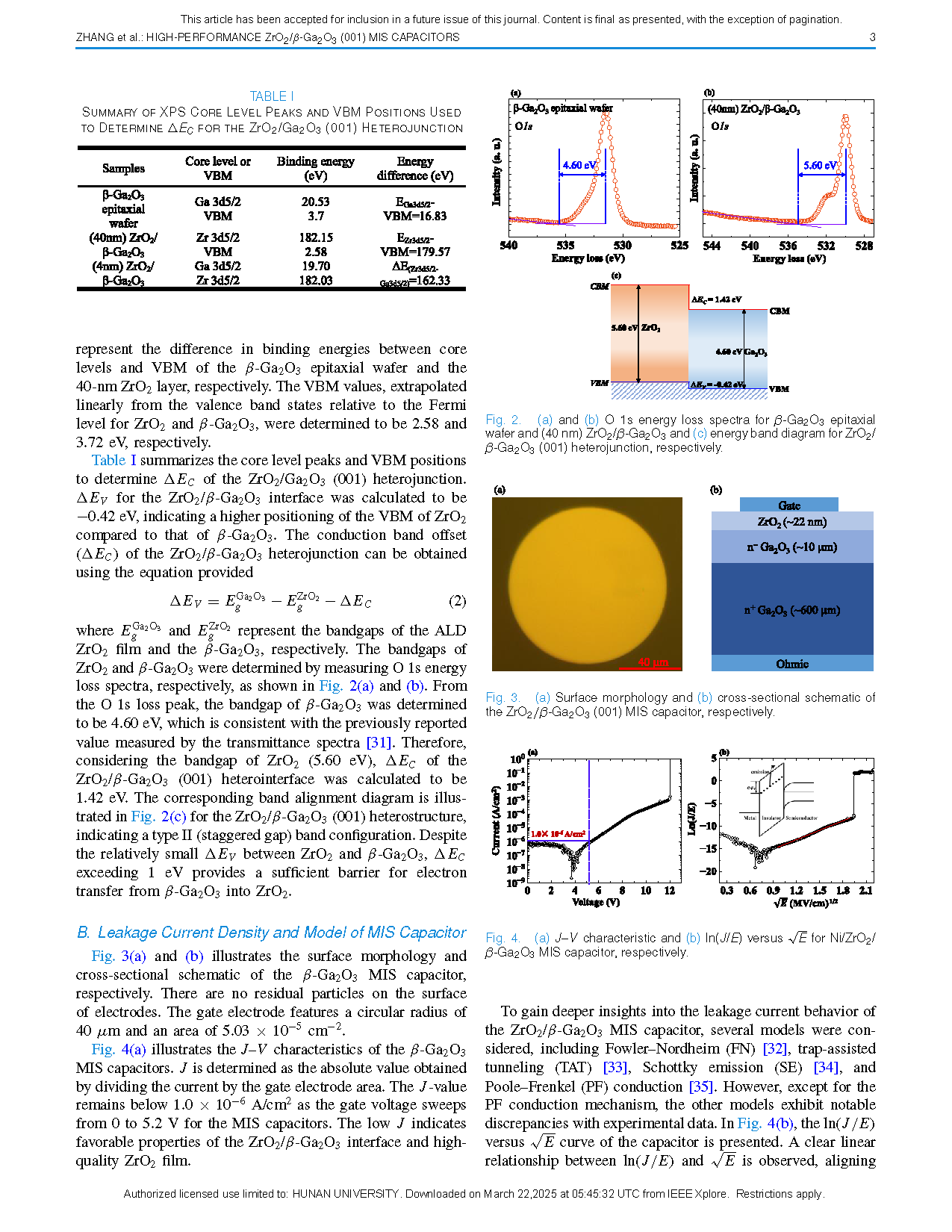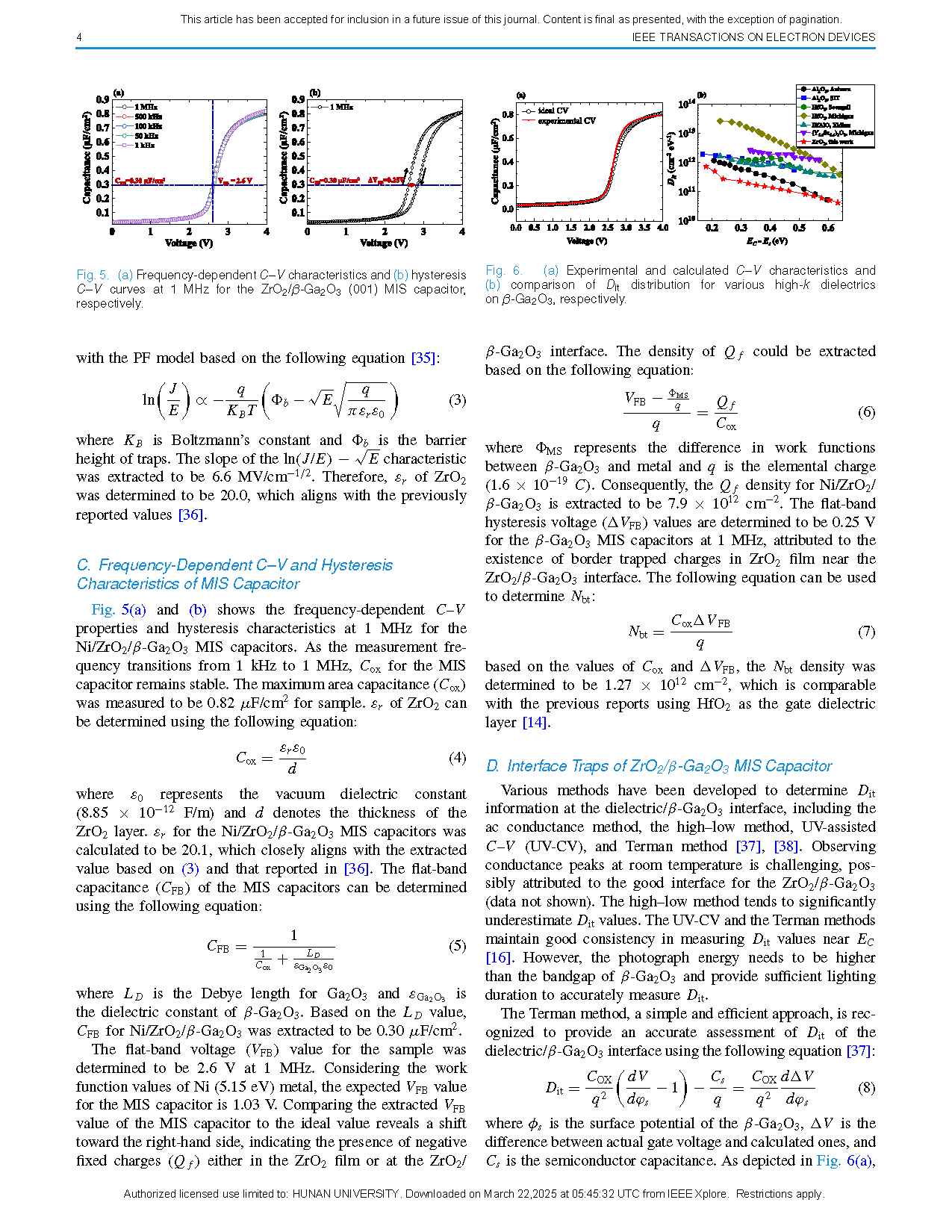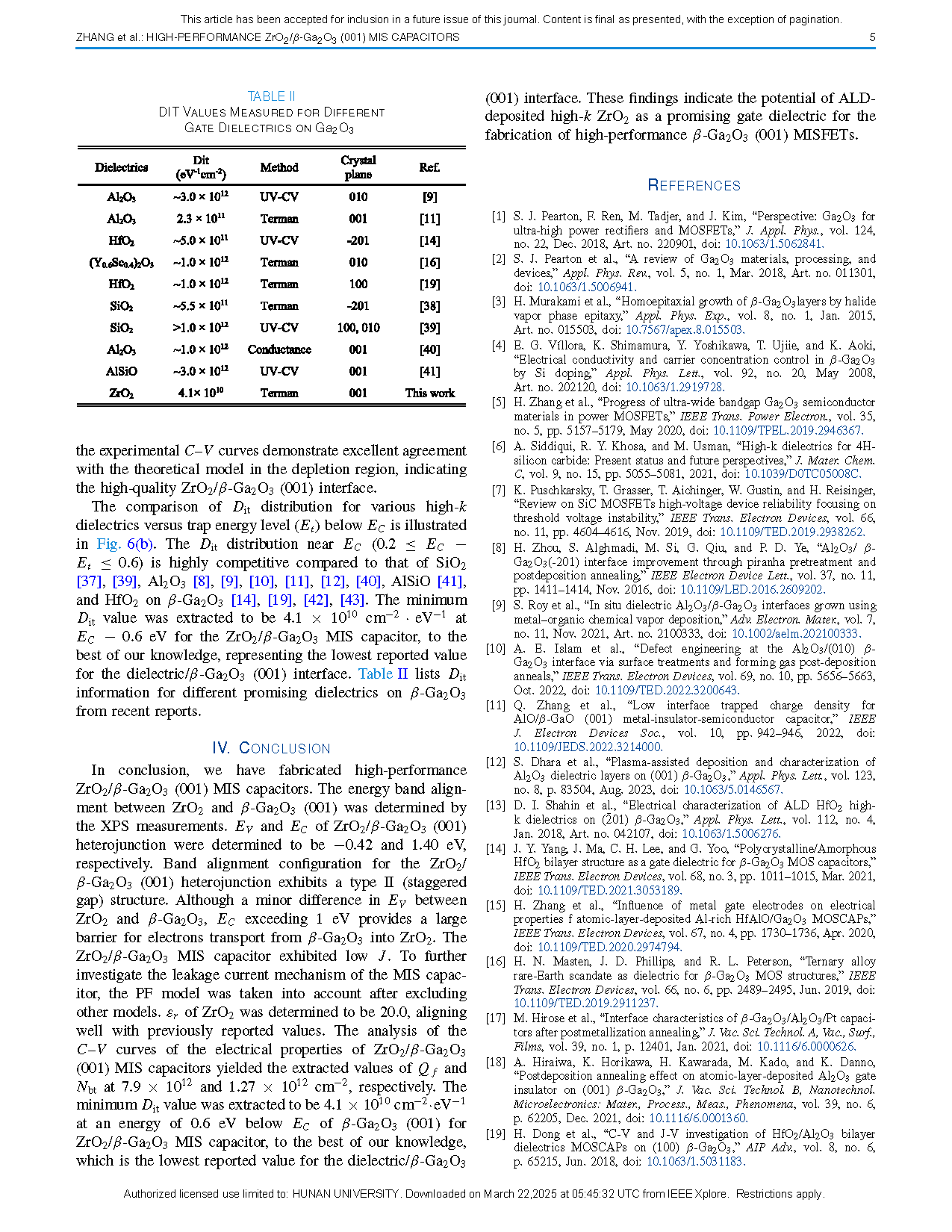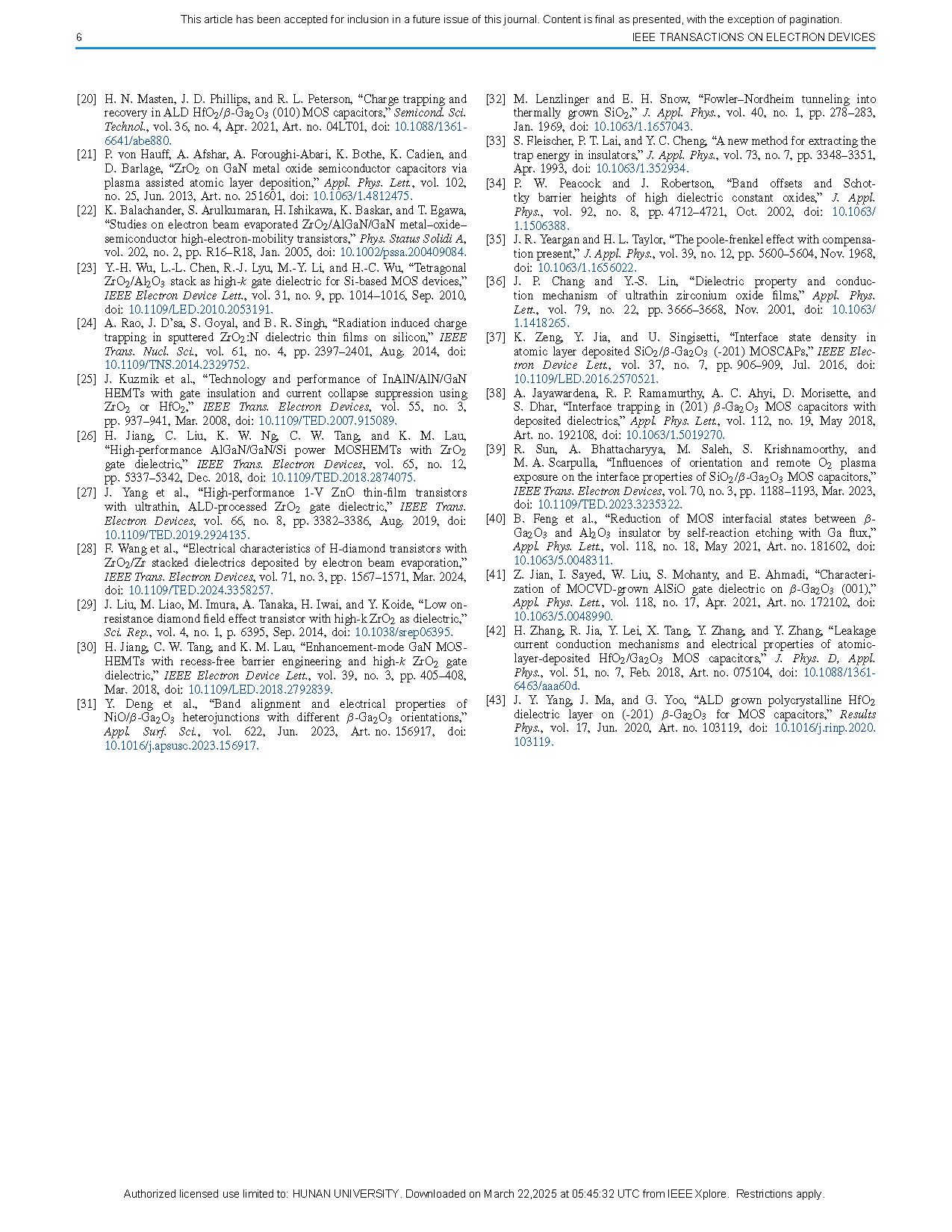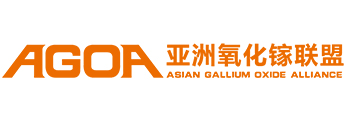

【Member Papers】High-Performance ZrO₂/β-Ga₂O₃ (001) Metal–Insulator–Semiconductor Capacitors
日期:2025-07-31阅读:240
Researchers from the Hunan University have published a dissertation titled "High-Performance ZrO2/β-Ga2O3 (001) Metal–Insulator–Semiconductor Capacitors" in IEEE Transactions on Electron Devices.
Project support
This work was supported in part by the Natural Science Foundation of Hunan Province under Grant 2023JJ30146 and in part by the Jie Bang Headed Project of Changsha, Hunan, China, under Grant kq2301006.
Background
For the past few years, the wide bandgap semiconductor materials, such as silicon carbide (SiC), gallium nitride (GaN), zinc oxide (ZnO), diamond, and beta-gallium oxide (β-Ga2O3), have garnered considerable attention due to their great potential in power and optoelectronic systems. β-Ga2O3 has emerged as a subject of substantial interest owing to its appealing characteristics. With a wide bandgap of approximately 4.6 eV and a high breakdown strength of around 8 MV/cm, it exhibits a superior Baliga figure of merit (BFOM) of approximately 3214, surpassing that of SiC and GaN. This elevated BFOM positions β-Ga2O3 as a more promising candidate for high-power applications compared to other materials. Furthermore, its commercially available large-area, high-quality substrate, coupled with precise control over doping concentration in the epitaxial layer, further bolsters its attraction. These outstanding properties mentioned above have spurred significant research into high-performance β-Ga2O3-based Schottky diodes, solar-blind ultraviolet photodetectors, and metal–insulator–semiconductor field-effect transistors (MISFETs).
Abstract
In this study, we have fabricated high-performance metal-insulator-semiconductor (MIS) capacitor using atomic layer-deposited ZrO2/beta-gallium oxide (β-Ga2O3) (001) heterojunction. The energy band alignment for the ZrO2/β-Ga2O3 heterojunction and electrical properties for the ZrO2/β-Ga2O3 MIS capacitor are investigated. Valence band offset (ΔEV) and conduction band offset (ΔEC) for the ZrO2/β-Ga2O3 heterojunction, determined by X-ray photoelectron spectroscopy (XPS) technique, are −0.42 and 1.42 eV, respectively. Its band alignment configuration exhibits a type II (staggered gap) structure. Gate leakage current and frequency-dependent capacitance-voltage (C–V) characteristics for the ZrO2/β-Ga2O3 MIS capacitor are investigated. The ZrO2/β-Ga2O3 MIS capacitor demonstrates a low gate leakage current. The Poole-Frenkel (PF) conduction model is employed to elucidate the gate leakage current mechanism. No significant frequency dispersion is observed based on the frequency-dependent C–V characteristics. The fixed charge and trapped charge densities in the ZrO2 film are calculated to be 7.9×1012 and 1.27×1012 cm−2, respectively. The minimum interface trapped charged density is extracted to be 4.1×1010 cm−2⋅eV−1 at an energy of 0.6 eV below the conduction band of β-Ga2O3, representing the lowest reported value for the dielectric/β-Ga2O3 (001) interface. These results indicate the formation of high-quality ZrO2 film on the β-Ga2O3, making it a potential candidate as gate dielectrics in β-Ga2O3 power devices.
Conclusion
In conclusion, we have fabricated high-performance ZrO2/β-Ga2O3 (001) MIS capacitors. The energy band alignment between ZrO2 and β-Ga2O3 (001) was determined by the XPS measurements. EV and EC of ZrO2/β-Ga2O3 (001) heterojunction were determined to be −0.42 and 1.40 eV, respectively. Band alignment configuration for the ZrO2/β-Ga2O3 (001) heterojunction exhibits a type II (staggered gap) structure. Although a minor difference in EV between ZrO2 and β-Ga2O3, EC exceeding 1 eV provides a large barrier for electrons transport from β-Ga2O3 into ZrO2. The ZrO2/β-Ga2O3 MIS capacitor exhibited low J. To further investigate the leakage current mechanism of the MIS capacitor, the PF model was taken into account after excluding other models. εr of ZrO2 was determined to be 20.0, aligning well with previously reported values. The analysis of the C–V curves of the electrical properties of ZrO2/β-Ga2O3 (001) MIS capacitors yielded the extracted values of Qf and Nbt at 7.9 × 1012 and 1.27 × 1012 cm−2, respectively. The minimum Dit value was extracted to be 4.1 × 1010 cm−2 ·eV−1 at an energy of 0.6 eV below EC of β-Ga2O3 (001) for ZrO2/β-Ga2O3 MIS capacitor, to the best of our knowledge, which is the lowest reported value for the dielectric/β-Ga2O3 (001) interface. These findings indicate the potential of ALD-deposited high-k ZrO2 as a promising gate dielectric for the fabrication of high-performance β-Ga2O3 (001) MISFETs.
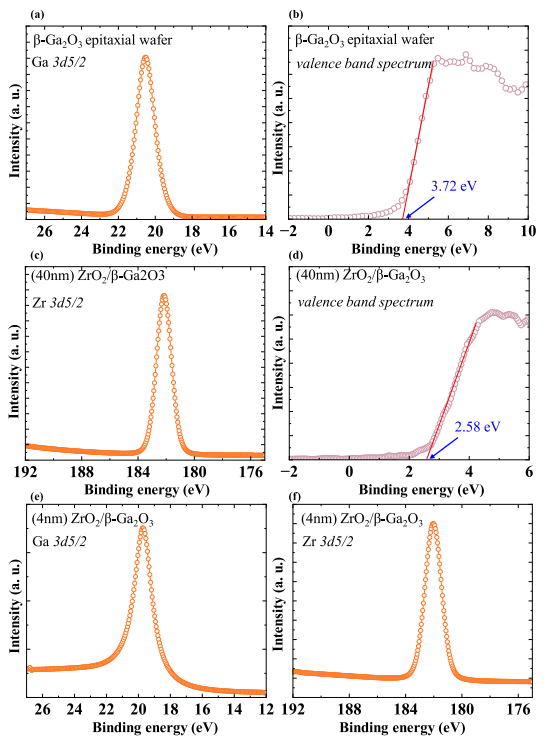
Fig. 1. XPS spectra used to determine ∆EC of the ZrO2/β-Ga2O3 heterojunction using (a) Ga 3d5/2 peak and (b) VBM spectrum from β-Ga2O3 epitaxial wafer, (c) Zr 3d5/2 peak and (d) VBM spectrum for the (40 nm) ZrO2/β-Ga2O3 heterojunction, and (e) Ga 3d5/2 and (f) Zr 3d5/2 peaks for the (4 nm) ZrO2/β-Ga2O3 heterojunction, respectively.
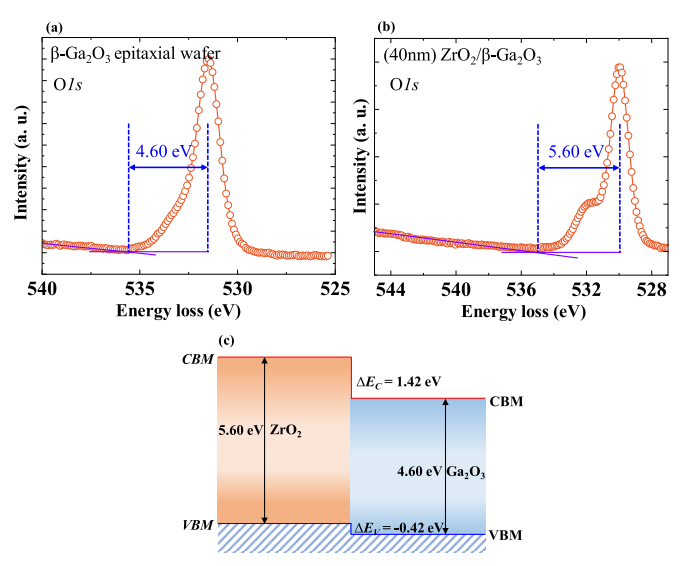
Fig. 2. (a) and (b) O 1s energy loss spectra for β-Ga2O3 epitaxial wafer and (40 nm) ZrO2/β-Ga2O3 and (c) energy band diagram for ZrO2/β-Ga2O3 (001) heterojunction, respectively.
DOI:
doi.org/10.1109/TED.2025.3549382
